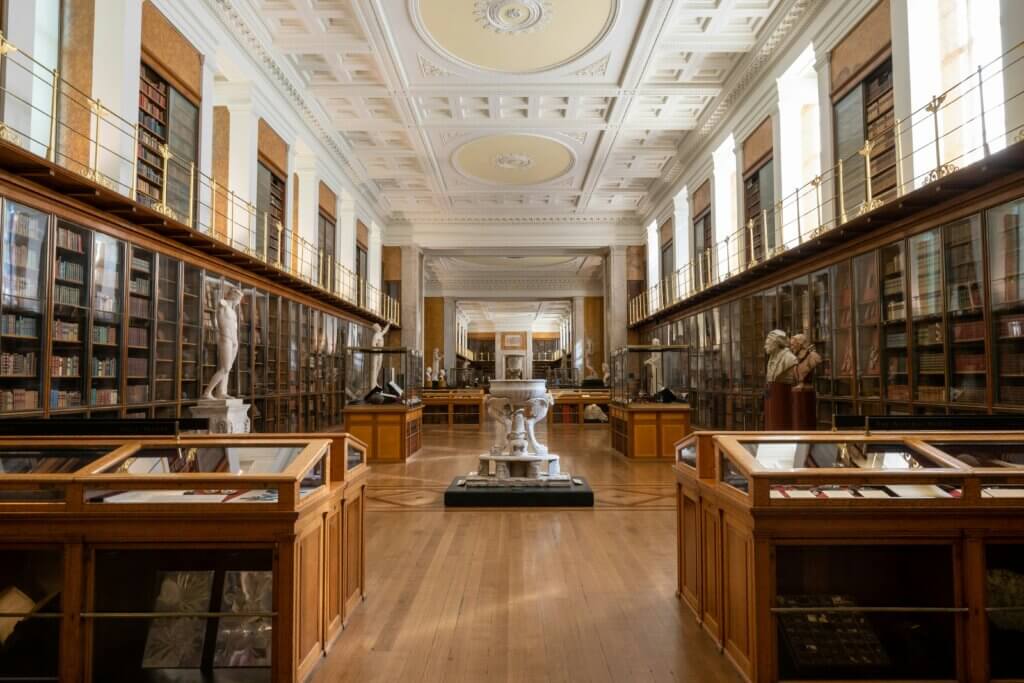The Literary Legacy: Libraries in London and Beyond
The United Kingdom certainly has an incomparable literary heritage, with London at its core as the birthplace for writers such as Shakespeare and Dickens, among countless others who have defined the English language and its literature.
Its literary legacy, of course, can be found spread far beyond the capital to the historic libraries and collections right across the UK in order to tell their own stories of knowledge, discovery, and inspiration.
This series explores some of the most iconic libraries in and around London, charting the treasures held and the stories they tell. The exploration is made even more accessible thanks to the network of high-speed trains, seamlessly connecting the vast cultural landscape of the UK, from the heart of London to the far reaches of Scotland and beyond, inviting literary enthusiasts on a journey through the pages of history.
The British Library, London

Our journey begins with the British Library, one of the world’s largest and most significant research libraries.
The British Library is home to over 170 million collection items ranging from manuscripts and maps to newspapers and sound recordings, covering in excess of 3,000 years of world knowledge.
This holds the greatest treasures of Magna Carta, Shakespeare’s First Folio, and the Lindisfarne Gospels. The King’s Library Tower, inside the library, holds the personal books of King George III, which is tantamount to an exemplar of pursuit in knowledge and the power of collection. For those looking to extend their literary exploration across the UK, the London to Edinburgh train provides a seamless and scenic journey to Scotland’s capital, where the rich tapestry of British literature continues to unfold.
The Bodleian Library, Oxford

A short train ride out of London brings us to Oxford, the student city, and to the ancient Bodleian Library, which is the actual central library of the University of Oxford. The Bodleian was established in 1602, making it one of the oldest libraries in Europe. By law, it is deposited to ensure that a copy of every book printed in the UK is housed therein.
It has over 13 million printed items and an impeccable architectural base, all of which truly form an academic study base whereby a literary heritage provides a beacon. Places such as the Radcliffe Camera and the Old Reading Room all offer inspiring spaces for study and contemplation.
The John Rylands Library, Manchester
Heading north to Manchester, the John Rylands Library is one masterpiece of Victorian Gothic construction. The library was founded by Enriqueta Rylands as a mausoleum to her husband John Rylands. Opening its doors in 1900, it became available to the public. This is today considered the part of the University of Manchester, which is given an outstanding collection of rare books, manuscripts, and medieval texts.
The setting of the library—from the high, vaulted ceilings to the elaborately worked stonework—is enough to spirit the history and literature buff away into another era, and is definitely worth a look.
The National Library of Scotland, Edinburgh
In Edinburgh, a guest has to cross to the “other side” to find the National Library of Scotland, acting as a legal deposit library under Scots law with millions of books, manuscripts, and maps. Its collections represent the full contribution to literature, science, and culture made from Scotland.
Often, an exhibition or a display is organized in the library based on the collection available in its funds, with the involvement of other great personalities of Scottish literature, like Sir Walter Scott or Robert Burns. Both the modern and the history sections of the library provide a lively area to take up research and exploratory work, which speaks of Scotland’s rich literary and intellectual traditions.
The Library of Trinity College, Dublin
One certainly cannot think of the literary heritage of the British Isles without considering a visit to the Library of Trinity College in Dublin, Ireland.
The library has become renowned due to the housing of the Book of Kells—an illuminated Gospel book held by many as one of Ireland’s greatest national treasures, dating from the 9th century. Barrel-vaulted ceiling and lines of old books, the image of literary history and proof of the ever-virgin, perpetually flowing wellspring of written knowledge.
The Wellcome Collection, London
In the heart of London, the Wellcome Collection offers a unique intersection of health, medicine, and art.
Originally founded by Sir Henry Wellcome, who, himself a pharmacist and pioneering collector, in a sense, the library-cum-museum was his effort to take an epic journey exploring the state of man through a vast and diverse collection of medical paraphernalia, works of art, and rare books. Where else would you find the well-researched collection of records and publications in the field of medical history or life sciences, but the library at the Wellcome Collection? Regular exhibitions—from ancient times in medical practice to modern times in the fusion of contemporary art with science—regularly challenge and push the perception of what a library can be.
Libraries in the UK and beyond
Venturing into London’s libraries and those across the UK is an exploration of Britain’s rich literary and intellectual tradition. From the British Library’s vast collections to the Wellcome Collection’s fusion of art and science, and the serene Armitt Museum and Library, these places are more than book repositories; they’re vibrant cultural hubs. Each library contributes to Britain’s story, offering insights into the past and pathways to future discoveries. As custodians of knowledge and creativity, they celebrate the written word’s power to connect us, inviting all who enter to uncover the narratives that shape our world.
